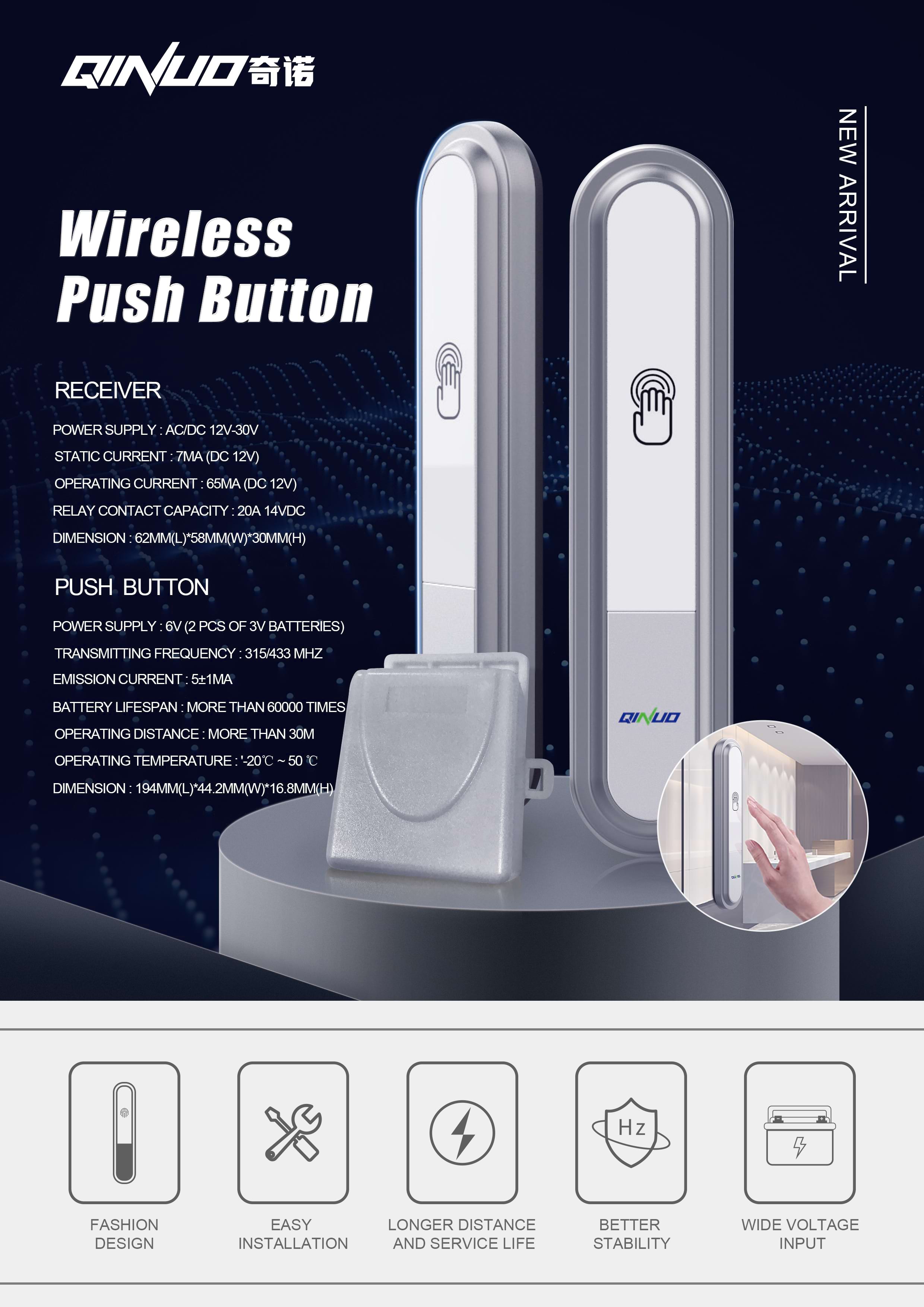Wireless push buttons have become indispensable components in access control systems and remote operations, offering convenience, flexibility, and efficiency. However, with the convenience of wireless technology comes the need for careful consideration of security implications. In this article, we will explore the security considerations when using wireless push buttons for access control and remote operations, highlighting the potential vulnerabilities and best practices to ensure the safety of these systems.

1. Encryption and Authentication
One of the primary concerns when using wireless push buttons is the risk of unauthorized access. To mitigate this risk, it's crucial to implement strong encryption protocols and authentication mechanisms. Ensure that the wireless communication between the push button and the target device or access control system is secure. This prevents eavesdropping and unauthorized users from intercepting or manipulating the signals.
2. Frequency Jamming
Wireless signals can be vulnerable to jamming attacks, where malicious actors disrupt communication by transmitting interference signals on the same frequency. To safeguard against jamming, consider using devices that operate on multiple frequencies or use frequency-hopping technology, which changes the communication frequency rapidly, making it difficult for jammers to disrupt the signals.
3. Replay Attacks
A replay attack involves capturing a wireless signal and retransmitting it to gain unauthorized access. To prevent this, implement a robust anti-replay mechanism. This mechanism ensures that each signal is unique and cannot be reused. It's essential to have secure and regularly updated access codes or tokens that expire or change frequently.
4. Physical Security
While wireless push buttons are a convenient means of access, it's essential to consider the physical security of these devices. Securely install them in a location where they are not easily accessible to unauthorized individuals. Tamper-proof housing can prevent physical interference or damage to the push button.
5. Authentication and Authorization Protocols
Access control and remote operations systems should employ robust authentication and authorization protocols. Ensure that only authorized users can trigger the wireless push button. Utilize multifactor authentication, biometrics, or secure tokens to verify the identity of users before granting access.
6. Regular Updates and Maintenance
Keep all components of your access control and remote operation system up-to-date. Manufacturers often release firmware updates and security patches to address vulnerabilities. Regular maintenance can also identify any physical or operational security issues that need attention.
7. Access Control Policies
Establish and enforce access control policies that determine who has access to the wireless push button and what actions they can perform. Access rights should be granted on a need-to-know basis, limiting the potential for misuse.
8. Monitoring and Logging
Implement robust monitoring and logging of all access control and remote operation activities. This allows you to track and audit who is using the wireless push buttons and when they are being used. Any suspicious activity can be investigated promptly.
Conclusion
Wireless push buttons have transformed access control and remote operations, offering convenience and flexibility. However, as with any technology, security considerations are paramount. By employing encryption, authentication, and anti-jamming measures, ensuring physical security, implementing robust access control policies, and maintaining up-to-date systems, you can mitigate the potential security risks associated with wireless push buttons. By taking these precautions, you can harness the convenience of wireless technology without compromising the security of your access control and remote operation systems.

-
Office ViewQinuo Electronics Co., Ltd.was founded in 2009,it is a high-tech company that integrated R & D, manufacturing, sales and service for 15 years,which is mainly specialized in providing sensors of automatic door, control system of door and gate, car key remote, auto parts etc. The company currently has four independent brands: U-CONTROL, U-SENSORS, U-AUTOGATES and U-AUTOKEYS.
-
got questions? call us
+86 13960286508
-
fax :
+86 595 22901208 -
Email :
[email protected]
-
address
- No.991 Xingxiu Road,Taiwanese Investment Zone, Quanzhou, Fujian Province,P.R.China











